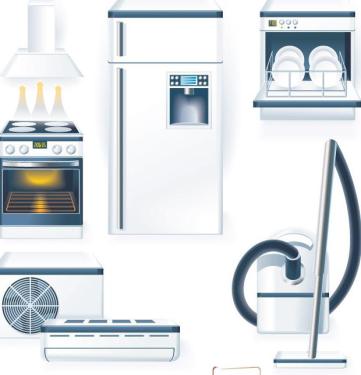The past year was an unusual year for many companies in the home appliance industry. From the beginning of policy tightening, downturn in real estate, overcapacity, and high costs, many home appliance companies suffered. Negative growth, cold winter, and persistent downturn have become the most commonly mentioned words in 2012 when the industry and the media talked about the home appliance industry. This is indeed the case in the market. According to the statistics of monthly retail monitoring data of 7290 stores in 942 cities and counties in China, Yikang showed that the sales of home appliances industry experienced the first negative growth since 2007, and the total retail sales for the year was 1.1285 trillion yuan, down 6.6 percent year-on-year. %. The data also shows that the sales volume of the home appliance industry reached a peak of nearly 12 years in 2011, which was 120.85 billion yuan. The growth curve was wavy. In 2008, the growth rate fell by only 4.6%, and then gradually accelerated. The growth rate in 2010 was the highest. 20.5%, then the growth rate has been slowing down, and it has seen negative growth in 2012. However, in 2012, the home appliance market was not without bright spots. Since the second half of the year, signs of warming have gradually become apparent. The data show that the retail sales in the market in January 2012 was approximately RMB 113.7 billion, a year-on-year increase of -15.3%, while the year-on-year increase in December 2012 was 9.4 points higher than that of January last year. percentage point. In terms of products, since the implementation of the energy-saving benefits subsidy policy in June 2012, the market share of successful products has increased significantly. Take color TV as an example, the market share of energy-saving color TVs has increased from 32% at the beginning of policy implementation to 89.3% at the end of last year. , Market share increased by nearly 1.8 times. In terms of other categories, energy-saving air conditioners account for less than 20% in June, and their market share has exceeded 40% by the end of the year. The market share of energy-saving refrigerators has also risen from less than 10% to more than 40%. Energy-saving refrigerators are even more Increased by nearly 30 percentage points. The institutions for household appliances in the market have been effectively improved, and energy-saving products have gradually begun to play a major role. At the same time, the proportion of medium-to-high-end products continues to increase, and the share of retail sales of smart TVs has increased from 19.6% in the previous year to 45.6%. These include inverter air conditioners, door-to-door refrigerators, drum washing machines, smart rice cookers, and near-suction range hoods. Shows a growing trend in retail sales. In terms of channels, along with the popularity of online shopping, consumers' buying habits have changed. The advantages of e-commerce channels in saving time costs and purchasing costs are favored by consumers and have been paid more and more attention by manufacturers. Increase efforts to promote. In addition to the characteristics of the product itself, it is suitable for live electrical products for online sales. More and more large appliances are added to online sales. From the perspective of online sales of category data in the first three quarters, the proportion of living appliances is gradually shrinking. The product has grown significantly. According to statistics from Zhong Yikang, sales of refrigerators, washing machines and air conditioners in e-commerce channels reached RMB 4.4 billion in 2012, and this figure is expected to reach RMB 11.9 billion in 2013. The industry is positive and the high-end trend of home appliances is obvious Although the total score of the home appliance industry in 2012 was not satisfactory, the industry still has confidence in the market outlook for 2013. Peng Yi, vice president of China Yikang believes that in 2013 the industry showed relative positive, people's livelihood issues were further attention, commodity housing sales tend to pick up, affordable housing is about to enter a large-scale acceptance and use phase, in addition, energy-saving products Huimin Engineering The positive response will be apparent from the end of 2012 to the first half of 2013. The home appliance market has indeed ushered in a good start this month. According to Zhong Yekang's monitoring data for the three weeks since New Year's Day, during the period, LCD televisions sold a total of 4.95 million units, an increase of 0.6% over the same period of 2012, and air-conditioning growth was even more pronounced at 13.6%. Refrigerators and washing machines Although retail sales have declined slightly, retail sales have grown by 2.3% and 1.9%. The proportion of medium and high-end products has further expanded. The high-end trend of household appliances will become clearer in 2013. The report predicts that smart and 3D will become the mainstream of TV market development. The retail volume of 3D TVs will increase from 18.75 million units in 2012 to 27.16 million units, and smart TVs will have 2012. The 16.1 million units in the year rose to 26.04 million units. At the same time, the market size of variable frequency air conditioners is also expected to increase from 58.6 billion yuan in 2012 to 83.3 billion yuan, and the growth rate will reach 42.2%. It is expected that technologies such as the Internet of Things and tailless home appliances will gain more applications in the field of home appliances. The report believes that the home appliance industry has gradually recovered, and it is expected that the home appliance market in 2013 will reach 1.178 trillion yuan, an increase of 2.0% year-on-year. Portable Energy Storage,energy storage companies,energy storage examples,potential energy storage,portable energy source Langrui Energy (Shenzhen) Co.,Ltd , https://www.langruienergy.com